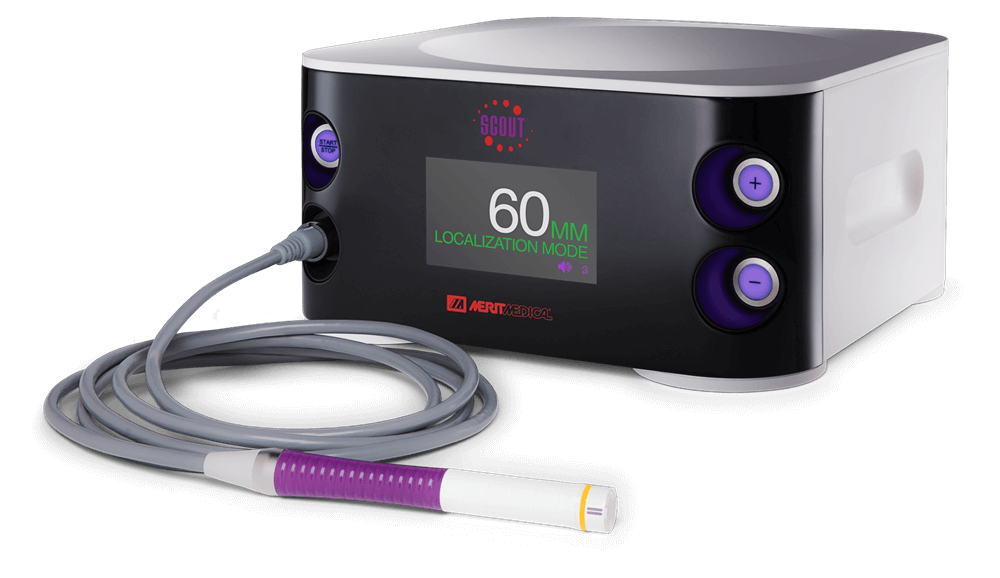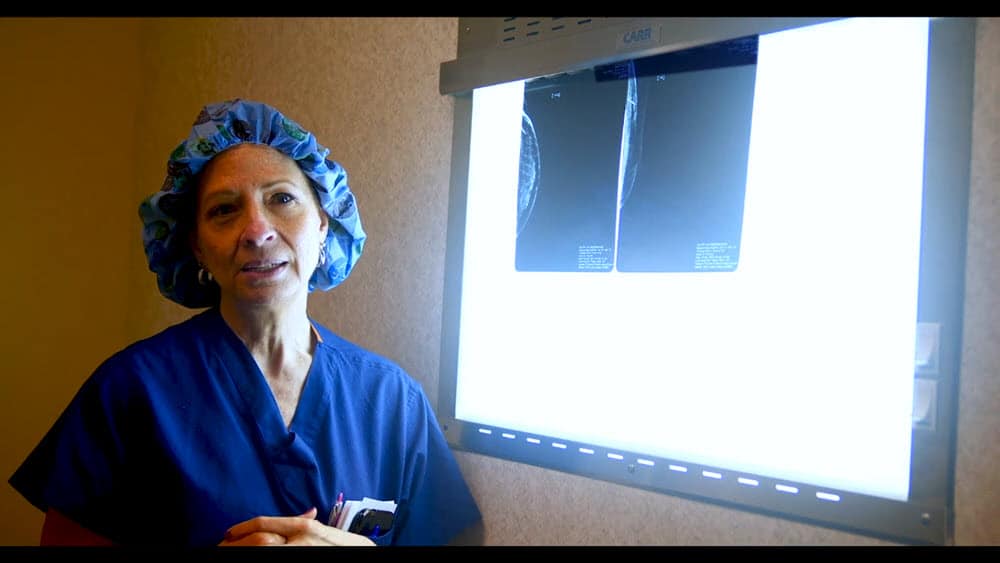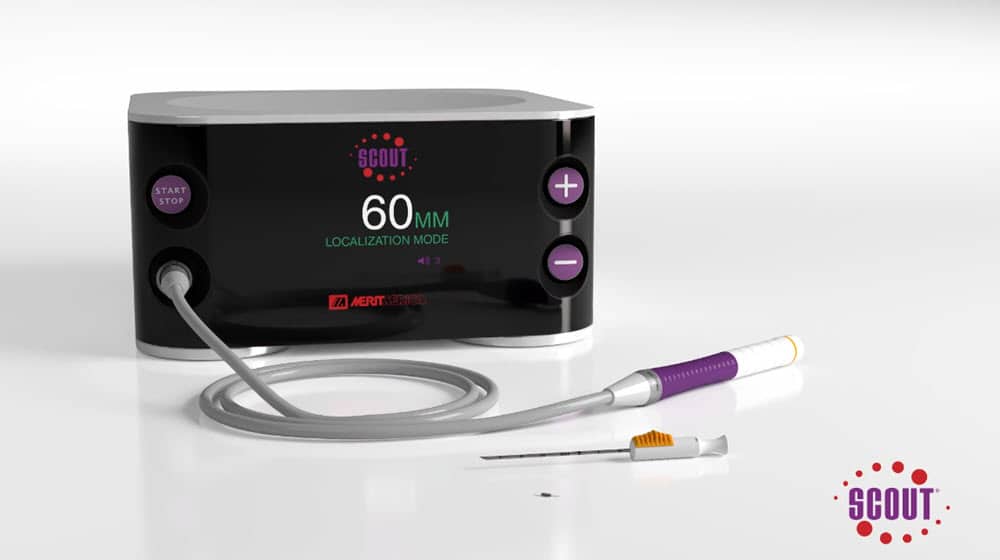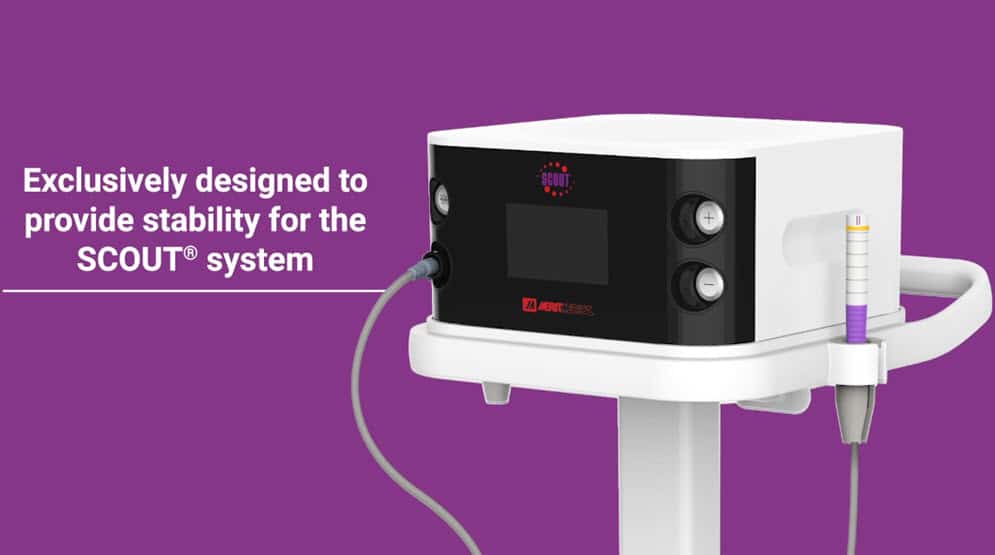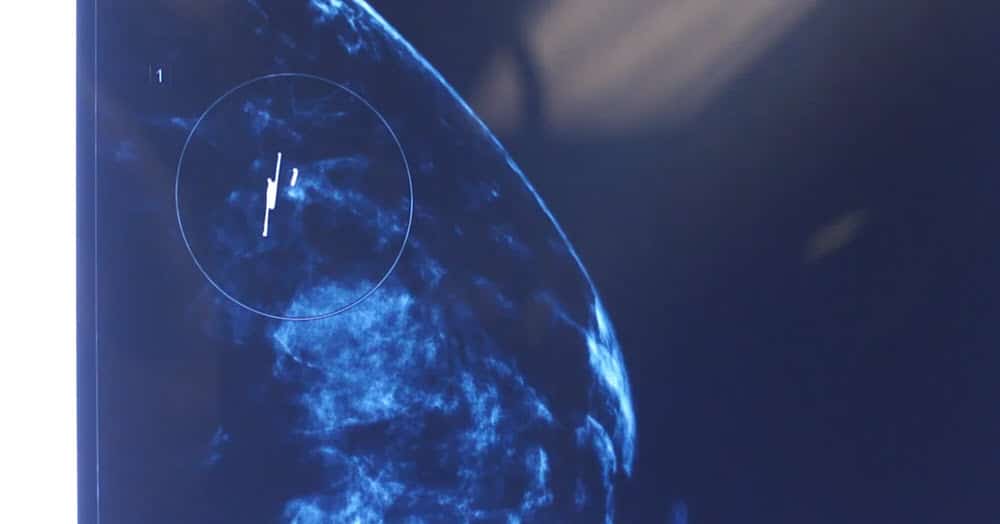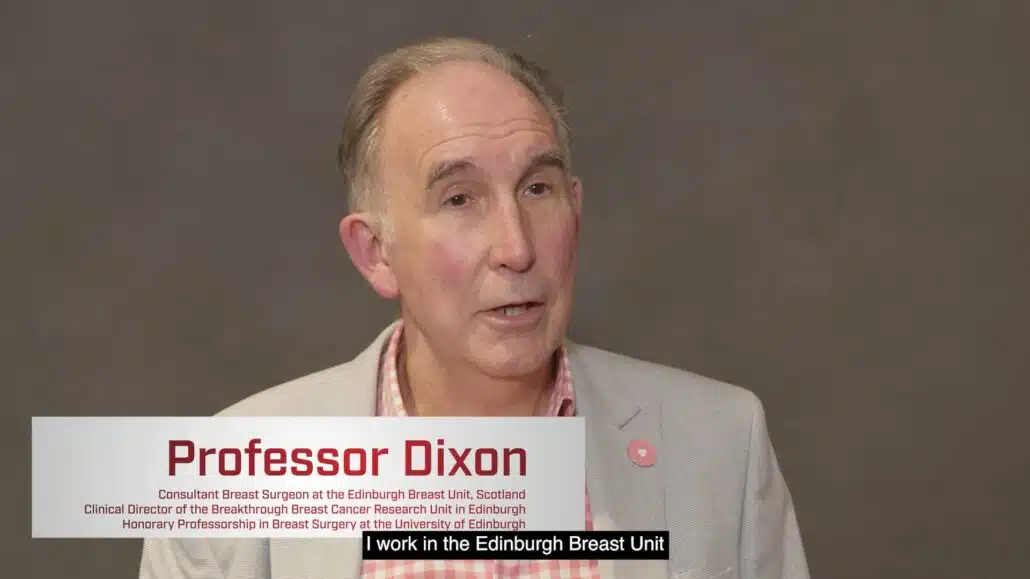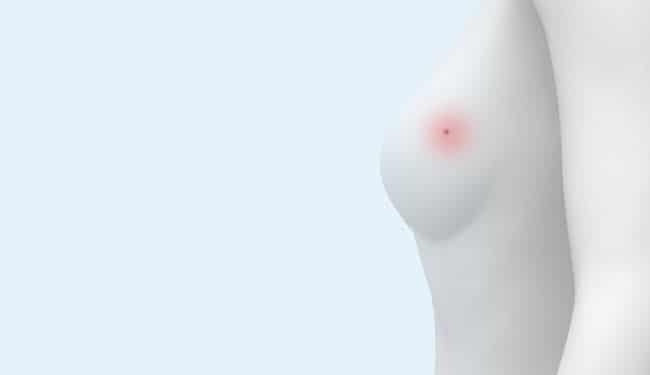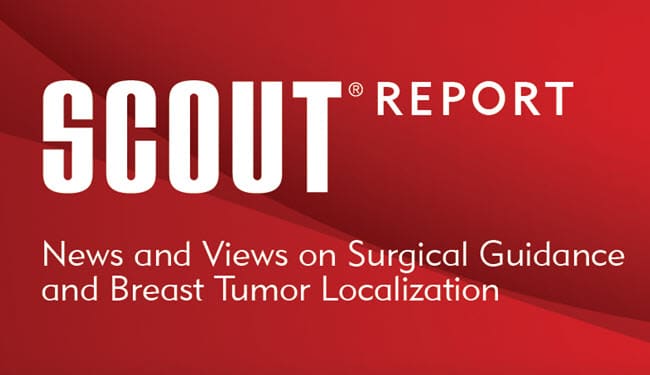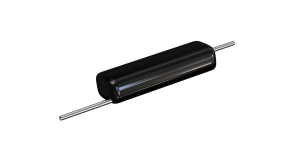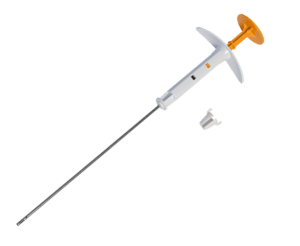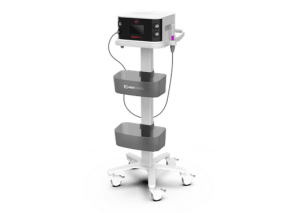Video Gallery
Features & Benefits
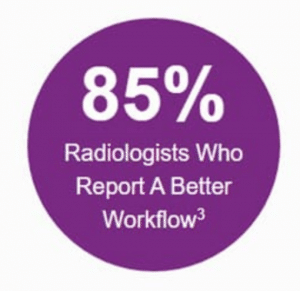


DETECT
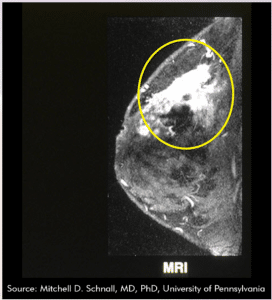
- After detection, physician and patient can opt to place the Reflector when the biopsy occurs
- Long-term implant of the Reflector can be placed any time prior to surgery
- Ultrasound, radiographic and stereotactic guidance options can all be used to place the Reflector
LOCALIZE
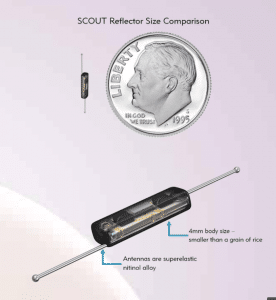
- Reflector remains in place and passive until activated by the SCOUT Guide
- Can be used to mark soft tissue, including lymph nodes
- 4mm body size is smaller than a grain of rice
- Antennas are made of super elastic nitinol alloy, commonly used in medical devices
IDENTIFY
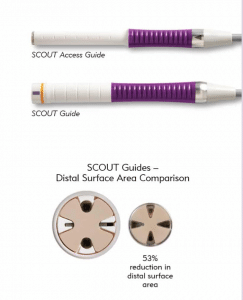
- Real-time distance measurement with 60mm detection range
- 360 ̊ detection with ± 1mm accuracy
- Documented 99.2% reliability
- Instant response guides dissection path, eliminating guesswork
- SCOUT Access Guide allows localization through small incisions

“I want to reiterate how care has improved since we started placing SCOUT Reflectors at the time of biopsy, which in most cases, is on the same day as the diagnostic mammogram. Women who’ve had previous wire localizations comment on the ease of the procedure, compared to traditional localization. They also love that they don’t have to return to the breast center for biopsy, and then again for a localization procedure.
One product, two steps eliminated. Patient satisfaction is through the roof. Patients know they are getting streamlined care at our breast care center. I so appreciate Merit for developing a product that has revolutionized care.”
Brett Parkinson
Imaging Director Breast Care Services
Intermountain Healthcare, Salt Lake City UT
CONSISTENCY & PREDICTABILITY
FROM CLINICAL PERFORMANCE
Step 1: Informed Pre-Surgical Planning
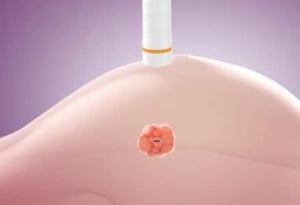
Precisely Identifies Tumor Location & Depth
- 60mm detection range2
- Permits cosmetically-preferred incision
- Actual distance measurement allows real-time planning of anterior margin
Step 2: Real-Time Margin Definition During Surgery
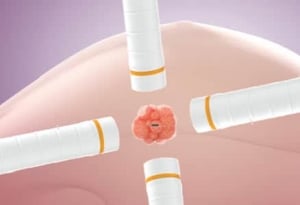
Helps Optimize Surgical Goals
- 360˚ detection with ± 1mm accuracy2
- Instant response guides dissection path, eliminating guesswork
- Predictable specimen with real-time margin definition
Step 3: Accurate Specimen Verification
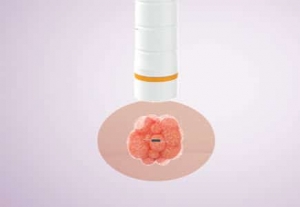
Optimizes Breast Conservation Strategy
- Confirms planned surgical margins relative to reflector location
- Accurate depth measurement when patients are in supine position
ACCURACY
IN DEPTH MEASUREMENT MATTERS
The SCOUT system’s true distance measurement overcomes challenges with mammography images when estimating tumor depth and location during supine surgical procedures, and allows surgeons to quickly identify location and depth of reflector.
Mammographic Upright Views Prior to Surgery
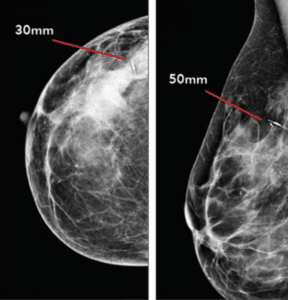
Measurement to Tumor in Supine Position Differs
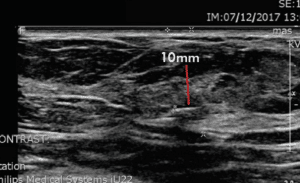
VISIBILITY
EXCELLENT UNDER IMAGING
CLEAR VISIBILITY UNDER IMAGING
The SCOUT System provides maximum flexibility with visualization regardless of the imaging modality. Shape provides unique radiographic and ultrasound images and The Reflector is a clinically insignificant MRI artifact.
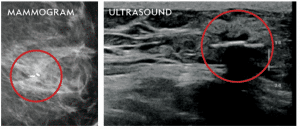
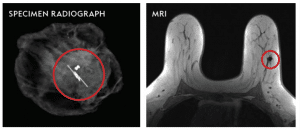
INSIGNIFICANT MRI ARTIFACT
SCOUT Radar technology promotes a streamlines Targeted Axillary Dissection; allowing surgeons to more easily identify previously biopsied nodes, even after neoadjuvant chemotherapy
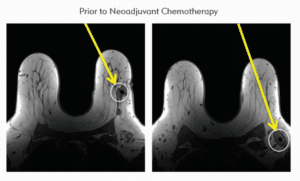
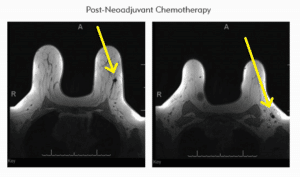
WIRE-FREE TECHNOLOGIES COMPARISON
A study published by Dr. Mary K. Hayes showcases the clarity of the SCOUT Reflector under MRI versus those of two other wire-free technologies on the market. 6

CLINICAL DATA
FEATURE STUDY
Use of SCOUT Reflectors to Identify the Previously Biopsied Node Significantly Improves the Probability of Surgical Removal and Subsequently Reduces the False Negative Cancer Rate
KEY RESULTS
- Only 47.4% (9 of 19) biopsied nodes were removed with conventional SLNB
- False negative rate = 33.3%
- All (19/19) biopsied nodes were identified and removed with SCOUT
- False negative rate = 0% (optimal goal)
ADDITIONAL DATA AND ADVANCED THERAPY INFORMATION
- Foundational Knowledge
- OR Efficiency
- Bracketing
- Long-Term Placement
- Neoadjuvant Chemotherapy
- Oncoplastic Techniques
- Targeted Axillary Dissection
- Time of Biopsy Placement
- Outside Breast
REFERENCES:
1. Hayes MK, Bloomquist EV, Wright H. SAVI SCOUT Improves Breast Surgery Operating Room Start Times Compared with Wire Localization. Presentation at: American Society of Breast Surgeons 18th Annual Meeting, April 2017, Dallas, TX.
2.Merit Medical Data on File
3. Cox C et al. A Prospective Single Arm, Multi-Site Clinical Evaluation of a Nonradioactive Surgical Guidance Technology for the Localization of Non-Palpable Breast Lesions during Excision. Ann Surg Oncol 2016 Oct;23(10):3168-74.
4. Wright et al: It’s about time: Wire-free SCOUT localization of positive axillary lymph nodes prior to neoadjuvant chemotherapy may offer options to de-escalate axillary surgery
5. Balija et al: Reflector Localized Lymph Node Biopsy: A Novel Aide in Axillary Staging After Neoadjuvant Chemotherapy for Node-Positive Breast Cancer
6. Hayes MK. Signal void artifacts in non-contrast T1 non-fat-saturated MR sequences. Update on Preoperative Breast Localization. Radiol Clin N Am (2017); 591-603.
7. Taback B, Jajeda P, Ha R (2018). Enhanced Axillary Evaluation Using Reflector-Guided Sentinel Lymph Node Biopsy: A Prospective Feasibility Study and Comparison With Conventional Lymphatic Mapping Techniques. Clinical Breast Cancer. https://www.ncbi.nlm.nih.gov/pubmed/29544701
8. Storm-Dickerson T, Gold R. Utility of the SCOUT reflector as an efficient tool for the identification of index lymph node following completion of neoadjuvant chemotherapy. 2019. Merit Medical Systems, Inc.
